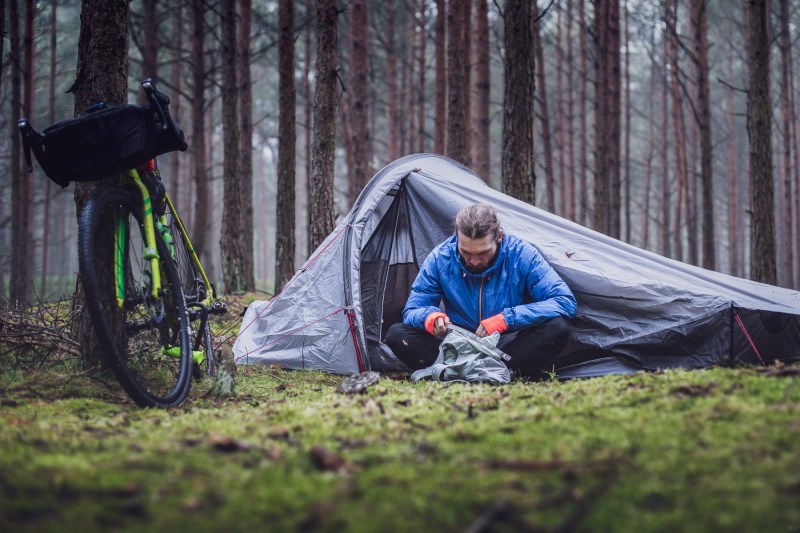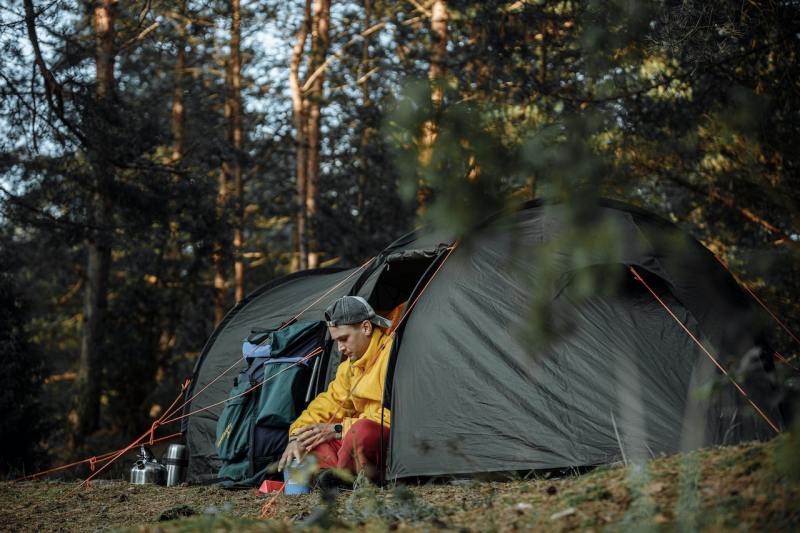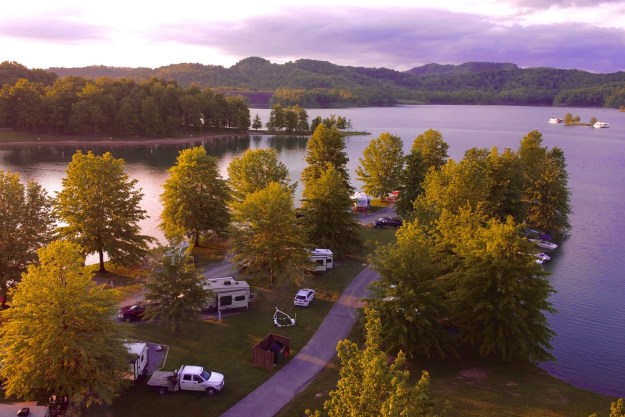The path of the committed outdoorsman is paved with poor weather, sodden trails, and tents being battered by the elements. Camping in the rain isn’t top of many people’s agenda, but in my opinion, some of my best nights sleeping outside in a tent have been camping in the rain. The sound of raindrops bouncing off your flysheet and the comfort of a warm, dry sleeping bag after a long day on the misty trail is a personal favorite.
Keeping yourself comfortable when you’re camping in the rain requires practice. It’s important that you have the right gear, but it’s more important that you know how to use it so that your camping trip doesn’t become a washout. Here are our top tips for camping in bad weather — if such a thing exists.
Know before you go
You should never go into the outdoors feeling unprepared, and the key part of your preparation is checking the weather forecast. The more you know about what you’re getting into, the better prepared you can be for your trip. First, ask yourself the question; does your proposed trip still work? Rain shouldn’t stop play, but torrential rain can mean that certain hikes — for example, trails with river crossings — and even some campsites aren’t going to be an option.
This preparation time also gives you a chance to re-waterproof some of your gear. If your boots are looking a little worse for wear, give them some treatment, or even replace them with a new set, to avoid squelching through your camping trip. Make sure you pack your tent with the higher hydrostatic head so you don’t wake up in a puddle in the morning.
Prioritise and protect your gear while packing
Even hiking backpacks that claim to be waterproof have their limits. To be sure that your critical gear — your sleeping bag, a change of clothes, food, any electronics, and medical or emergency supplies — stays completely dry when camping in the rain, you need to pack everything into a waterproof bag or even better, multiple waterproof bags.
If you’re out on a backpacking trail, we recommend using lightweight dry bags to pack into your hiking pack. If you pack in a modular fashion — using individual dry bags for separate items — this also helps when you get to camp, as you only need to pull out a single dry bag at a time. Your other items will still remain dry inside their own bags, rather than having an open backpack filling with rain.
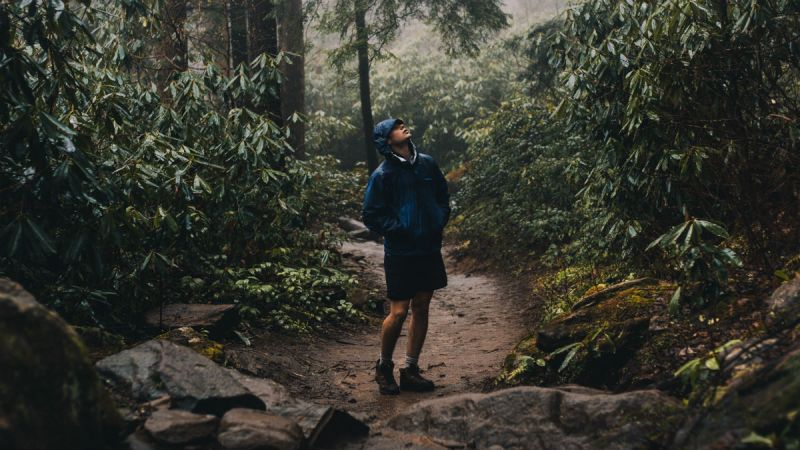
Avoid cotton but layer up
If you’re camping in the rain, you will need a high-quality waterproof jacket and a pair of waterproof pants, as well as a pair of waterproof boots. Underneath all of this outer armor, you need to wear the right layers. Wearing breathable and quick-drying layers under your waterproofs regulates your temperature effectively and lets sweat evaporate. This means no cotton and sticking to synthetic fabrics and fibers or merino wool layers. It’s rare that cotton is the outdoorsman’s fabric of choice, but when it’s wet, cotton can be dangerous. Once wet, it stays wet and has no insulating or breathable qualities when it’s soaked through. In short, you’ll get cold, and you’ll stay cold.
It’s also advisable to avoid taking down insulated gear in bad weather, as down clumps and doesn’t trap heat effectively. Stick to synthetic and wool in the rain, and you’ll stay warm, even if you get wet. You can also dry out synthetic gear more easily by either hanging it under a tarp until it’s damp and then putting it on so that your internal furnace can get the last of the moisture out of it. Top tip; put on a damp t-shirt and climb back into your synthetic sleeping bag to help dry your clothes out for the day ahead.
Fuel yourself
It can be tempting to forego the evening meal and retreat to your tent for an early night when the rain is pouring. Sure, you can survive for a night or two off snack bars, but if you’re out on the trail, trust us when we say you will want to eat a proper meal and fend off hiker hunger for the next day. If you know you’re going to be in heavy rain and are packing light, pack dehydrated meals or ready-to-eat meals that cook quickly so you can get under shelter sooner.
If you’re not thru-hiking or packing lightweight, and you’ve got your tarp cooking shelter, then cooking should be a top priority for you. After all, you’re going to end up sheltering for a few hours, why would you settle for anything less than the perfect camp meal? Your food is going to fuel you through the night, keep you warm while you’re sleeping, and more than anything it will boost your morale. Camp food should be taken seriously on every trip, but when it’s raining, make sure you focus on that fuelling.
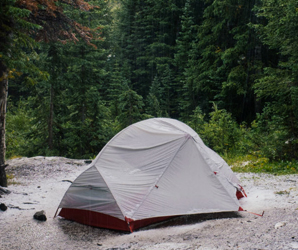
Get your pitch perfect
That patch of grass in the trees might look like the perfect spot to pitch your tent, but if it’s at the bottom of a hill or near a river, you’re going to want to think again. Try to find some high ground where the water is running off, and remember that rivers are liable to swell overnight. Just because they’re not a danger when you go to bed doesn’t mean you aren’t going to be woken up in the night by the creek gently lapping over your toes.
Look for natural shelter that can give you some protection from the rain while cooking or answering nature’s call at night. This isn’t just great for you but for your tent, too. Every tent has a waterproof limit, and it’s better to give yours all the help it can get and stay dry than test it fully and find that limit overnight. If you can’t find any natural shelter, remember to pitch your door facing away from the prevailing wind direction so your tent doesn’t fill with rain every time you climb in and out.
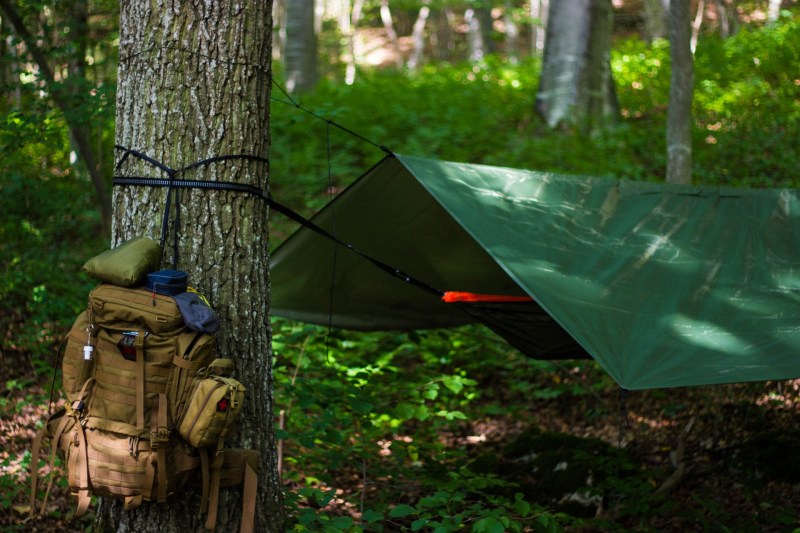
Always take a tarp
Modern camping tarps are lightweight and barely noticeable in your bag, but they are invaluable when it comes to enjoying your time in the rain. Learn a few different ways to pitch your tarp and use these to either protect your tent, extend the porch area, or create an entirely new covered area for cooking or socializing. If you are camping on wet ground, you can use your tarp as a groundsheet under your tent to prevent moisture from coming in through the floor. Make sure your tarp doesn’t poke out of the edges, though, or it will collect water and cause more issues than it solves.
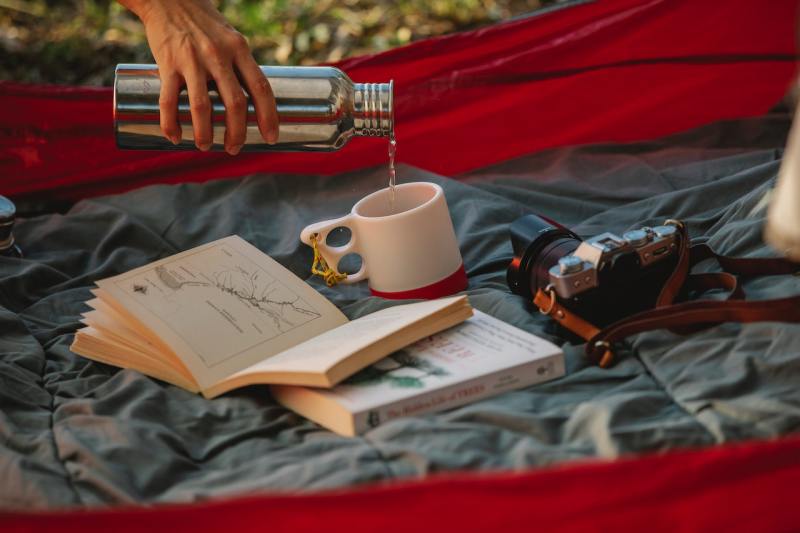
Pack alternative entertainment
On a wet camping trip, you can find yourself spending a lot of time in your tent. Keeping yourself busy is important and helps to raise morale, too. Adventure books, playing cards, and board games are all great ways to occupy yourself and take your mind off the rain. If you’re out on a longer trip, you might also choose to keep a journal or look at the map and plan your next few days. Perhaps you might just want an early night, and here’s your ready-made excuse to be a little less sociable than usual.
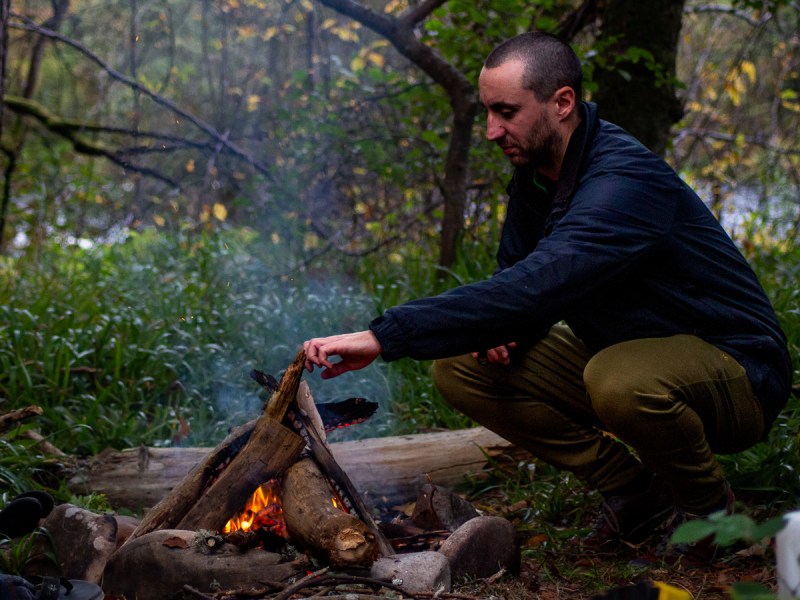
Be prepared with firewood
One of the best ways to get warm and dry when you’re camping in the rain is to have a campfire. Ideally, you can collect your firewood before the rain starts, but if this isn’t possible, you should collect it as soon as possible and move it to a sheltered location. Stack your wood to allow for airflow and help it dry, even a little, and once your fire is burning, move some logs closer to dry them out for burning. It’s also worth packing some tinder, or kindling, in with you to get the fire going. Alternatively, split logs to find drier wood that’s easier to burn.
Editors' Recommendations
- Brand profile: Mountain Gazette is the biggest little magazine you don’t know you love (yet)
- The worst camping mistakes we’ve made (so that you don’t have to)
- Stock your on-the-go outdoor kitchen with the best camping cookware
- Gear up for your next big adventure with the best camping gear and accessories
- Get the best camping axes for cutting, chopping, and prepping your way around the campsite

